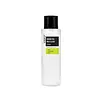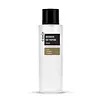What's inside
What's inside
 Key Ingredients
Key Ingredients

 Benefits
Benefits

 Concerns
Concerns

 Ingredients Side-by-side
Ingredients Side-by-side

Water
Skin ConditioningButylene Glycol
HumectantGlycerin
HumectantSodium Hyaluronate
Humectant1,2-Hexanediol
Skin ConditioningAloe Barbadensis Leaf Extract
EmollientCamellia Sinensis Leaf Extract
AntimicrobialBetaine Salicylate
AntimicrobialArginine
MaskingPanax Ginseng Root Extract
EmollientHoney
HumectantRosa Multiflora Fruit Extract
MaskingGardenia Florida Fruit Extract
Skin ConditioningScutellaria Baicalensis Root Extract
AstringentLigustrum Japonicum Fruit Extract
Skin ConditioningAcanthopanax Senticosus Root Extract
Skin ConditioningPunica Granatum Fruit Extract
AntioxidantCarthamus Tinctorius Flower Extract
Skin ConditioningBetaine
HumectantAllantoin
Skin ConditioningLeontopodium Alpinum Extract
Skin ConditioningThymus Vulgaris Extract
PerfumingMalva Sylvestris Flower Extract
Skin ConditioningBambusa Vulgaris Leaf/Stem Extract
HumectantSnail Secretion Filtrate
Skin ConditioningEthylhexylglycerin
Skin ConditioningParfum
MaskingWater, Butylene Glycol, Glycerin, Sodium Hyaluronate, 1,2-Hexanediol, Aloe Barbadensis Leaf Extract, Camellia Sinensis Leaf Extract, Betaine Salicylate, Arginine, Panax Ginseng Root Extract, Honey, Rosa Multiflora Fruit Extract, Gardenia Florida Fruit Extract, Scutellaria Baicalensis Root Extract, Ligustrum Japonicum Fruit Extract, Acanthopanax Senticosus Root Extract, Punica Granatum Fruit Extract, Carthamus Tinctorius Flower Extract, Betaine, Allantoin, Leontopodium Alpinum Extract, Thymus Vulgaris Extract, Malva Sylvestris Flower Extract, Bambusa Vulgaris Leaf/Stem Extract, Snail Secretion Filtrate, Ethylhexylglycerin, Parfum
Water
Skin ConditioningButylene Glycol
HumectantAlcohol
AntimicrobialNiacinamide
Smoothing1,2-Hexanediol
Skin ConditioningGlycerin
HumectantSodium Hyaluronate
HumectantBetaine
HumectantMyrciaria Dubia Fruit Extract
Skin ConditioningEuterpe Oleracea Fruit Extract
PPG-26-Buteth-26
Skin ConditioningPEG-40 Hydrogenated Castor Oil
EmulsifyingAdenosine
Skin ConditioningHydrolyzed Collagen
EmollientHydrogenated Lecithin
EmulsifyingSh-Oligopeptide-1
Skin ConditioningCopper Tripeptide-1
Skin ConditioningEthoxydiglycol
HumectantPanthenol
Skin ConditioningAcanthopanax Senticosus Root Extract
Skin ConditioningPunica Granatum Fruit Extract
AntioxidantPanax Ginseng Root Extract
EmollientCarthamus Tinctorius Flower Extract
Skin ConditioningLonicera Japonica Flower Extract
Skin ConditioningSolanum Lycopersicum Fruit Extract
AntioxidantLilium Tigrinum Extract
Skin ConditioningNelumbo Nucifera Seed Extract
AntimicrobialChrysanthemum Indicum Flower Extract
Skin ConditioningMalva Sylvestris Flower Extract
Skin ConditioningBuddleja Davidii Extract
Skin ConditioningThymus Vulgaris Extract
PerfumingCamellia Sinensis Callus Culture Extract
PerfumingPhaseolus Radiatus Meristem Cell Culture Extract
Skin ConditioningPanax Ginseng Callus Culture Extract
Skin ConditioningTocopheryl Acetate
AntioxidantSnail Secretion Filtrate
Skin ConditioningPhenoxyethanol
PreservativeEthylhexylglycerin
Skin ConditioningParfum
MaskingWater, Butylene Glycol, Alcohol, Niacinamide, 1,2-Hexanediol, Glycerin, Sodium Hyaluronate, Betaine, Myrciaria Dubia Fruit Extract, Euterpe Oleracea Fruit Extract, PPG-26-Buteth-26, PEG-40 Hydrogenated Castor Oil, Adenosine, Hydrolyzed Collagen, Hydrogenated Lecithin, Sh-Oligopeptide-1, Copper Tripeptide-1, Ethoxydiglycol, Panthenol, Acanthopanax Senticosus Root Extract, Punica Granatum Fruit Extract, Panax Ginseng Root Extract, Carthamus Tinctorius Flower Extract, Lonicera Japonica Flower Extract, Solanum Lycopersicum Fruit Extract, Lilium Tigrinum Extract, Nelumbo Nucifera Seed Extract, Chrysanthemum Indicum Flower Extract, Malva Sylvestris Flower Extract, Buddleja Davidii Extract, Thymus Vulgaris Extract, Camellia Sinensis Callus Culture Extract, Phaseolus Radiatus Meristem Cell Culture Extract, Panax Ginseng Callus Culture Extract, Tocopheryl Acetate, Snail Secretion Filtrate, Phenoxyethanol, Ethylhexylglycerin, Parfum
Ingredients Explained
These ingredients are found in both products.
Ingredients higher up in an ingredient list are typically present in a larger amount.
1,2-Hexanediol is a synthetic liquid and another multi-functional powerhouse.
It is a:
- Humectant, drawing moisture into the skin
- Emollient, helping to soften skin
- Solvent, dispersing and stabilizing formulas
- Preservative booster, enhancing the antimicrobial activity of other preservatives
We don't have a description for Acanthopanax Senticosus Root Extract yet.
Betaine is a common humectant (a substance that promotes retention of moisture). It's known to be gentle on the skin and can help balance hydration.
This ingredient is best for improving hydration and soothing irritated skin. Studies also show it helps even out skin tone.
Fun fact: Betaine is naturally created in the skin and body. The kind found within cosmetic products can be either plant-derived or synthetic.
Another name for betaine is trimethylglycine.
Learn more about BetaineButylene Glycol (or BG) is used within cosmetic products for a few different reasons:
Overall, Butylene Glycol is a safe and well-rounded ingredient that works well with other ingredients.
Though this ingredient works well with most skin types, some people with sensitive skin may experience a reaction such as allergic rashes, closed comedones, or itchiness.
Learn more about Butylene GlycolWe don't have a description for Carthamus Tinctorius Flower Extract yet.
Ethylhexylglycerin (we can't pronounce this either) is commonly used as a preservative and skin softener. It is derived from glyceryl.
You might see Ethylhexylglycerin often paired with other preservatives such as phenoxyethanol. Ethylhexylglycerin has been found to increase the effectiveness of these other preservatives.
Glycerin is already naturally found in your skin. It helps moisturize and protect your skin.
A study from 2016 found glycerin to be more effective as a humectant than AHAs and hyaluronic acid.
As a humectant, it helps the skin stay hydrated by pulling moisture to your skin. The low molecular weight of glycerin allows it to pull moisture into the deeper layers of your skin.
Hydrated skin improves your skin barrier; Your skin barrier helps protect against irritants and bacteria.
Glycerin has also been found to have antimicrobial and antiviral properties. Due to these properties, glycerin is often used in wound and burn treatments.
In cosmetics, glycerin is usually derived from plants such as soybean or palm. However, it can also be sourced from animals, such as tallow or animal fat.
This ingredient is organic, colorless, odorless, and non-toxic.
Glycerin is the name for this ingredient in American English. British English uses Glycerol/Glycerine.
Learn more about GlycerinWe don't have a description for Malva Sylvestris Flower Extract yet.
Ginseng root is a well-loved ingredient in Asian skincare for good reason. It hydrates the skin, soothes irritation, and helps even out skin tone.
In traditional East Asian medicine, ginseng has been used for centuries both as food and as a healing remedy, and modern research continues to confirm its skin benefits.
One of the standout features of ginseng is its ability to improve blood circulation and oxygen delivery to the skin, bringing a fresh supply of nutrients to support overall skin health. It also has antioxidant and anti-inflammatory properties. This helps to protect your skin against damage from UV exposure, pollution, and daily stress.
Additionally, studies suggest that ginseng may help reduce hyperpigmentation by inhibiting tyrosinase, the enzyme involved in melanin production.
There are different types of ginseng used in skincare, and while they all share core benefits, their potency can vary.
Most products use fresh or white ginseng because it’s more affordable. However, red ginseng, produced by steaming the root, contains higher levels of ginsenosides, which are compounds with proven anti-aging effects. These ginsenosides help reduce the appearance of wrinkles and improve skin elasticity.
Note: All forms of ginseng are listed simply as “Panax ginseng” in ingredient lists. We recommend reaching out to the brand if you have questions about which type of ginseng is used in their ingredients.
For general antioxidant benefits, any ginseng extract will do, but for wrinkle care or firmer skin, red or fermented ginseng is often more effective.
In short, ginseng is a powerhouse ingredient that supports hydration, radiance, and resilience.
Learn more about Panax Ginseng Root ExtractParfum is a catch-all term for an ingredient or more that is used to give a scent to products.
Also called "fragrance", this ingredient can be a blend of hundreds of chemicals or plant oils. This means every product with "fragrance" or "parfum" in the ingredients list is a different mixture.
For instance, Habanolide is a proprietary trade name for a specific aroma chemical. When used as a fragrance ingredient in cosmetics, most aroma chemicals fall under the broad labeling category of “FRAGRANCE” or “PARFUM” according to EU and US regulations.
The term 'parfum' or 'fragrance' is not regulated in many countries. In many cases, it is up to the brand to define this term.
For instance, many brands choose to label themselves as "fragrance-free" because they are not using synthetic fragrances. However, their products may still contain ingredients such as essential oils that are considered a fragrance by INCI standards.
One example is Calendula flower extract. Calendula is an essential oil that still imparts a scent or 'fragrance'.
Depending on the blend, the ingredients in the mixture can cause allergies and sensitivities on the skin. Some ingredients that are known EU allergens include linalool and citronellol.
Parfum can also be used to mask or cover an unpleasant scent.
The bottom line is: not all fragrances/parfum/ingredients are created equally. If you are worried about fragrances, we recommend taking a closer look at an ingredient. And of course, we always recommend speaking with a professional.
Learn more about ParfumYou might know this ingredient as pomegranate fruit. It has been shown to have antioxidant, skin soothing and anti-aging benefits.
Pomegranates are rich in antioxidant compounds such as polyphenolic compounds such as ellagic acid, phenolic acids, anthocyanins, and flavonoids.
Both in-vivo and in-vitro studies show pomegranate fruit helps with:
These benefits offer skin anti-aging and skin soothing benefits.
Fun fact: The name pomegranate comes from two latin words: "pome" or apple, and "granate" or "many seeded".
Pomegranate flower extract is often confused for pomegranate fruit extract, but comes from the flowers of the tree.
Learn more about Punica Granatum Fruit ExtractSnail Secretion Filtrate is the excretion from snails. It is an effective moisturizer and promotes collagen production.
A popular nickname for this ingredient is 'Snail Mucin'.
Snail mucin has numerous skin benefits:
On top of this, Snail Secretion Filtrate contains a variety of vitamins and minerals. These include copper peptides, Vitamin A, and vitamin E. Vitamins A and E are antioxidants. Antioxidants help fight free-radicals that damage skin cells.
Being cruelty-free means a brand does not experiment on animals.
If you're worried about the well-being of the snails, we recommend looking more into the company of the product. Many brands have developed humane methods to collect snail mucin.
There is much debate on this subject. On one hand, this ingredient comes from an animal. On the other hand, many will argue the ingredient is naturally secreted (like a natural by-product) and therefore vegan. If you have reservations, you can look into Galactomyces Ferment Filtrate or Centella Asiatica Extract as alternatives.
Learn more about Snail Secretion FiltrateSodium Hyaluronate is hyaluronic acid's salt form. It is commonly derived from the sodium salt of hyaluronic acid.
Like hyaluronic acid, it is great at holding water and acts as a humectant. This makes it a great skin hydrating ingredient.
Sodium Hyaluronate is naturally occurring in our bodies and is mostly found in eye fluid and joints.
These are some other common types of Hyaluronic Acid:
Learn more about Sodium HyaluronateThymus Vulgaris Extract is a fragrance.
Water. It's the most common cosmetic ingredient of all. You'll usually see it at the top of ingredient lists, meaning that it makes up the largest part of the product.
So why is it so popular? Water most often acts as a solvent - this means that it helps dissolve other ingredients into the formulation.
You'll also recognize water as that liquid we all need to stay alive. If you see this, drink a glass of water. Stay hydrated!
Learn more about Water